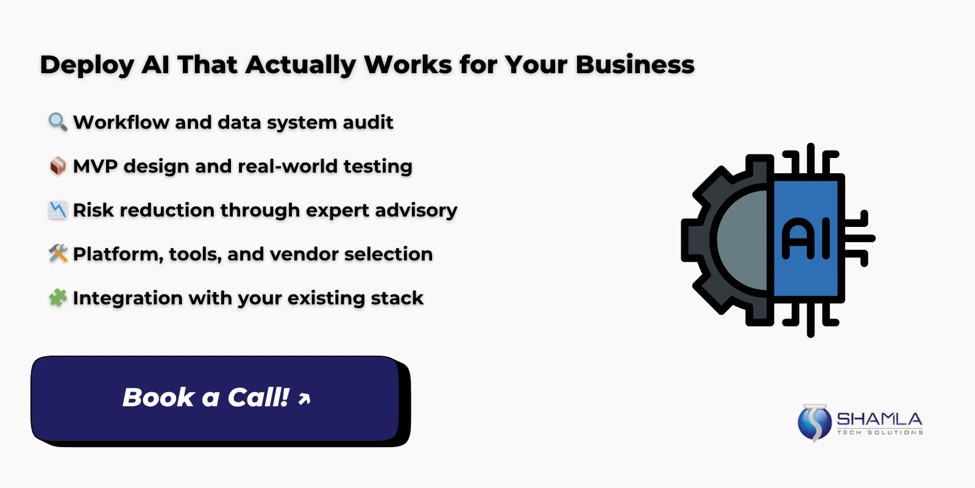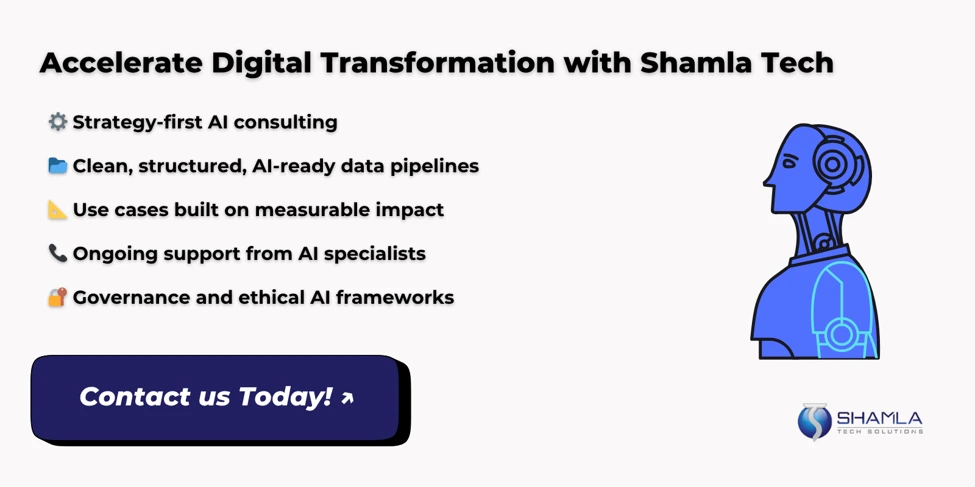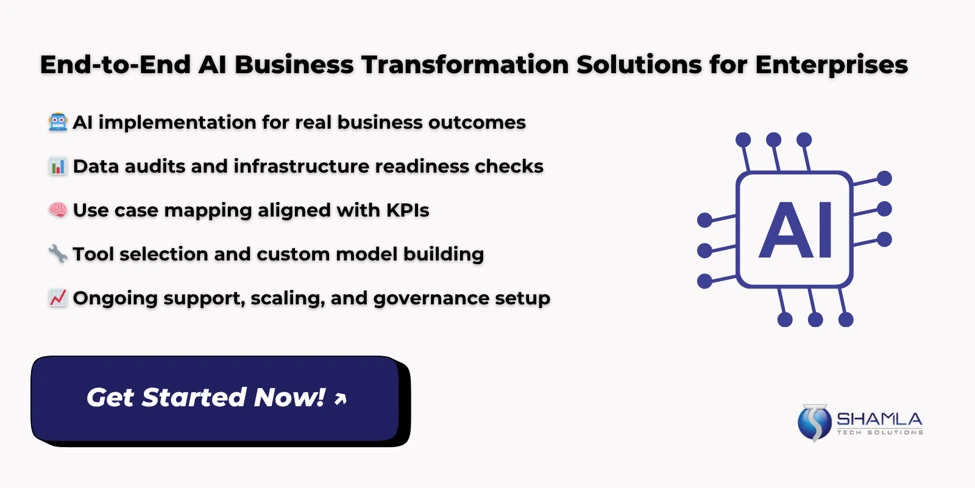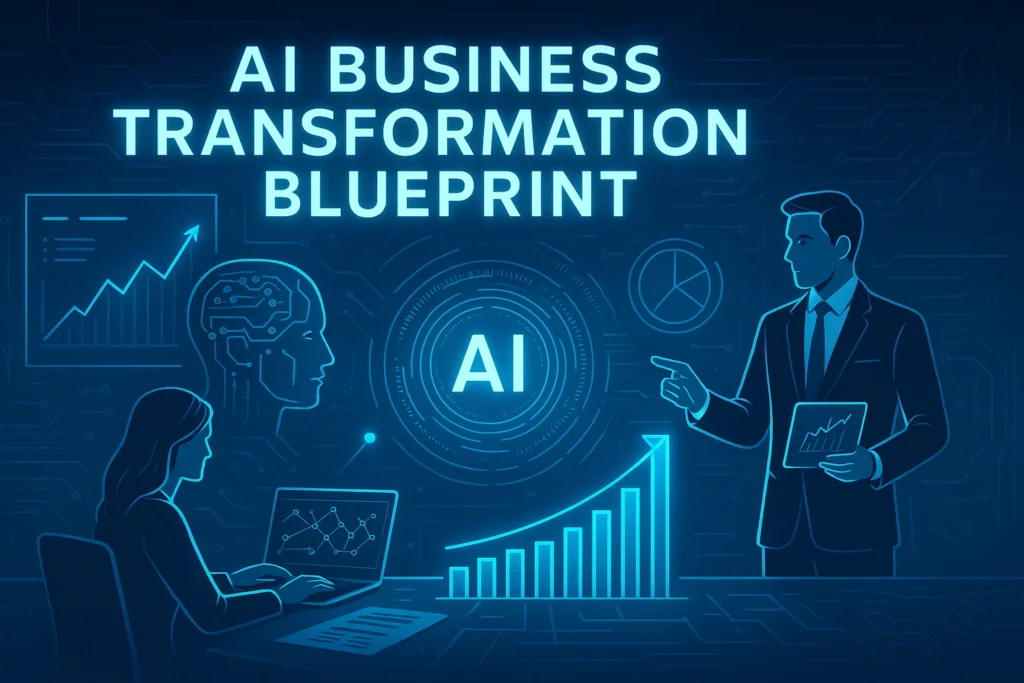Adopting AI effectively has become a race against competitors in every sector. Without expert help, a flawed rollout can waste money and derail projects. AI consultants bring deep knowledge to guide strategy, prevent errors, and align tools with goals. They map data flows, pick platforms, train teams, and track results. In today’s market, AI business transformation demands precise planning and clear oversight. From selecting algorithms to scaling systems, every step carries risks.
A structured AI implementation roadmap cuts guesswork and boosts success odds. Learning how to implement AI in business with support ensures you harness technology safely, speeding results and avoiding costly setbacks.
Why Most AI Business Transformations Fail Without Expert Guidance
Misaligned Goals and Use Cases
Weak Data Quality and Systems
Limited In-House Skills and Growth Plan
Falling for the Hype Trap
Consultants Bridge Tech and Business
AI Business Transformation Blueprint
1. Laying the Groundwork
Begin by checking existing steps, tools and data flow to see where work slows down or errors happen. For AI business transformation, you must map each process and spot gaps in data collection and storage. Next, set clear goals for what you want to achieve. These goals could include faster report times, fewer manual steps or smarter customer replies. At this stage, ask: how to implement AI in business without breaking current systems? Document current software, hardware and team skills in simple charts or lists:
- Data sources and formats
- Software licenses and versions
- Team roles and skill levels
Define what AI implementation success looks like by creating specific targets, like cutting report time by 30 percent or automating 50 percent of email replies. These targets form the base of your AI strategy and guide every next move. Ensure every person on the team knows the aim, the scope of work and what good results look like for AI implementation.
2. Building a Use Case Portfolio
Pick ideas that carry little risk but promise big gains. For AI business transformation, start with tasks that take too much time or cause common mistakes. Look at customer service tags, invoice checks or simple data reports. Each use case should tie directly to a key measure, such as cost saved or error rate cut. That links your work to the main business pain points and keeps leaders on board. Outline each use case with these points:
- Problem description and impact level
- Needed inputs and expected outputs
- Simple success metric (for example, 95 percent accuracy)
Group use cases by effort level and impact. Roll out low-effort wins first to prove value and build trust in your AI strategy.
3. Choosing the Right AI Tools & Partners
Decide between open code models and paid services based on your budget and in-house skill. Open code models let you tweak every detail but may need more tech work. Paid services come with support but can cost more over time. When you look for outside help, pick third-party AI consultants or vendors who have done similar work in your field. Check their track record and code samples to confirm they can meet your goals. For each tool or partner, list:
- Core features and limits
- Integration steps with your systems
- Cost per user or per call
Use these notes to compare options side by side. A clear scorecard helps you pick the best match for your AI strategy and ensures smooth AI implementation with minimal delay.
4. Execution & Piloting
Build a minimum workable version (MVP) for one use case. Keep it small: only include core functions needed to show a clear boost. Run the MVP on real data or a close copy. Track performance against your original targets. For example, measure time saved or error drop per week. Hold quick review sessions with team members and end users to gather feedback.
Ask: how did this proof of concept show the value of AI business transformation? Update your pilot based on real input and data. Once you hit your benchmarks, document lessons learned and fix remaining bugs. This cycle of test, measure and tweak forms the heart of your AI implementation plan and proves its value before scaling up.
5. Scaling Responsibly
After a successful pilot, broaden your AI business transformation to more teams or tasks. Put rules in place to keep data safe and comply with laws. Train staff on new steps and share clear guides. Form a small group to guard quality, manage changes and check that models stay fair and accurate. Be open about what AI can and cannot do.
Share updates with stakeholders regularly, using simple charts to show impact. Plan regular audits to spot drift or misuse. Embed ethics checks into your process to prevent bias or errors. A solid change plan and clear talk builds trust and makes sure your AI strategy lasts over time. Always tie back new work to your original goals to keep everyone focused on real value.

How Shamla Tech Can Create a Future-Proof AI Implementation Strategy
Full-Cycle AI Consulting
Business-First Roadmaps
Cross-Industry Expertise

Conclusion
Implementing AI wrong costs more than tools or time. Without a clear plan, your AI implementation risks extra work, hidden bugs, and lost trust. Smart AI business transformation combines a solid plan, quick tests and right experts. Good strategy, careful work and the right partners cut waste and speed results. Skipping steps or choosing wrong tools makes budgets blow out and deadlines slip. To stay on track and on budget, focus on clear goals, real data checks and open updates at each stage.
Partner with Shamla Tech to build a clear, results-driven AI plan.
Start your AI business transformation with the right team by your side!





